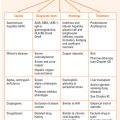Chapter 29 ANAESTHESIA FOR ENDOSCOPY
INTRODUCTION
In order to undertake upper or lower gastrointestinal endoscopy patients must be anaesthetised in some way. They do not need a deep level of anaesthesia, only moderate sedation—drug induced depression of consciousness. The purpose of this chapter is to give an outline of patient assessment (see Chapter 28 for more information), monitoring and drugs used in order to sedate patients undergoing procedures.
PATIENT ASSESSMENT
ANAESTHESIA AND SEDATION
Midazolam
In the event of overdose, seen by respiratory depression, flumazenil, a specific benzodiazepine receptor antagonist, can be given. The plasma half-life of flumazenil is very short (2–5 min), so repeat doses may be required. The dosage is 0.1–0.2 mg boluses of up to 3 mg until reversal is seen.
SUMMARY
Bailey PL, Zuccaro GJr. Sedation for endoscopic procedures: Not as simple as it seems. Am J Gastroenterol. 2006;101:2008-2010.
Rex DK. Review article: moderate sedation for endoscopy: sedation regimens for non-anesthesiologists. Aliment Pharmacol Ther. 2006;24:163-171.
Ristikankare M, Julkunen R, Heikkinen M, et al. Sedation, topical pharyngeal anesthesia and cardiorespiratory safety during gastroscopy. J Clin Gastroenterol. 2006;40:899-905.
Waring JP, Baron TH, Hirota WK, et al. Guidelines for conscious sedation and monitoring during gastrointestinal endoscopy. Gastrointest Endosc. 2003;58:317-322.








